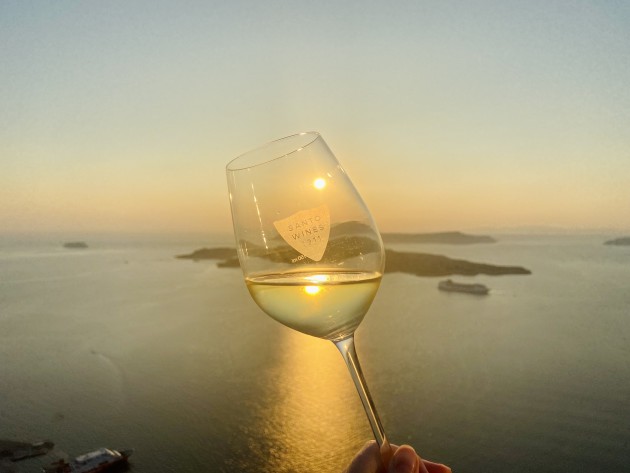
Santorini prices edge towards Champagne
Santorini, the land of very old vines, is facing new challenges, with skyrocketing price-per-kilo costs putting them on par with some of the world’s most expensive.
A recent visit to the region revealed a land of Phylloxera-free vines, with rootstocks which routinely date back centuries. Assyrtiko is king here, accounting for the vast majority of plantings and production. The wines are staunchly saline, with a thoroughly pronounced mineral back bone pushing through from volcanic soils and cooling Aegean winds, which are particularly welcome at the moment with the heatwave blasting its way through Europe.
Yet, there is something at odds, here. The wines carry a cachet both in quality and name, which attracts legions of tourists every year. However, the same tourism boom is making land prohibitively expensive.
Real estate prices are at eye-watering levels. An exodus of locals has worsened things, too. The island is now populated largely with a seasonal, tourism-based workforce, which is far more interested in working in lucrative local bars and hotels rather than back-breaking work in scorching vineyards. Prices per kilo are now at €5 – just shy of the €6-7 in Champagne. To make things even more stark, the price of Santorini grapes is contrasted with the average price of grapes on the mainland, which sits at just 70 cents.
- Read more: Greece – The land of unbroken tradition
“Only in the past five years has it become a five star tourism destination,” George Athanas, operations manager for Wines of Greece and Wines of Santorini, told Harpers.
“Lots of the wines are very high quality, but are selling high, too. The cost of grapes has quadrupled from what it was, while the cost of even 1ha is incredibly high…if you can find it.”
Santorini has much to make it unique. The humidity and clay content of the soils is such that Phylloxera completely bypassed Santorini, home to an active volcano which last went off 1,600 years ago, leaving the island decimated and uninhabited for centuries. Luckily for Santorini, the island’s soils and climate protected it from Phylloxera, making it essentially immune. In 2023, the island is home to a unique ancient vine training system known as kouloura, made by winding the vines in a basket shape, and are still used today. The baskets help to protect the vines from harsh sea winds while also trapping in the humidity – essential for a region which largely does not irrigate.
However, the basket system is labour-intensive, adding to cost pressures. Many are also stripping out Athiri and Aidani from their repertoire, despite the fact that they add roundness and aromatic complexity to the sometimes austere Assyrtiko.
“As prices go up, wineries need to focus more on 100% Assyrtiko. Athiri and Aidani make it easier to make a style that the average consumer likes. But everyone is looking for Assyrtiko now and they’re willing to trade up,” Athanas said.
For the full article, see the upcoming issue of Harpers, available in print and online from 3 August.




